Transform your gut health with a jar of homemade sauerkraut. Packed full of probiotics, enzymes and vitamins, this easy-to-make fermented food will soon become a staple in your household. Learn how to make sauerkraut food along with fermenting success tips and troubleshooting common issues in this in-depth article below.
Sauerkraut. It comes in a can. It comes in a jar. Pile it high on a corned beef reuben. Slather it over a grilled brat. That is what many think of when they hear the word sauerkraut. For some is brings back fond memories of summer cookouts and delicious meals. For others kraut brings about feelings of repulsion.
I’ll be honest … I never much cared for sauerkraut. The sour, mushy cabbage in a can did not enthuse me when I heard it was being served for dinner. Little did a know that in my thirties my love and enjoyment for kraut would greatly increase. But it wasn’t for that soggy mess in a jar. It was for something so much more.
Fermented sauerkraut.
Since I was little, I’ve always had gut trouble. Some times were worse than others. In my early thirties, I experienced gut pain like never before. During the grueling affair, God revealed to me the importance of true nutrition. Part of that revelation was about the health benefits of fermented food. Who knew that a simple jar full of vegetables, salt and water would bring tremendous healing to my body? And that is exactly what happened.
Homemade Sauerkraut
New to fermenting, I hesitantly placed a jar of veggies covered in a salt water brine on my counter. It seemed unusual to leave food out. Wouldn’t it rot? Society has taught us that fermented food is unsafe. Everything must be washed, sanitized or cooked to death in order for it to be safe to consume. What might be the mainstream way isn’t always right. To my surprise, I learned there is a whole world of good bacteria inside that little jar of fermenting veggies. After just one jar of fermented veggies, I knew I needed more. Fermented food soon became a staple in my diet. And eventually my family’s diet as well.
As I began to explore the world of fermentation, I felt a draw to learn more about our food. This conviction was soon followed by the desire to buy local, expand our garden and flee the industrialized food system. So I started fermenting everything I could. Green beans, salsa, carrots and pickles. Eventually I delved into the world of cultured dairy and discovered the power of homemade yogurt and kefir milk. But homemade sauerkraut will always been my favorite fermented food. It’s easy to make and incredibility tasty. And as I am sure you can already guess, it is packed full of probiotics, enzymes and vitamins.
My hope for you is that you will learn how to make sauerkraut and that this recipe will nourish your body and help you feel your very best!
What is Lacto-fermentation?
Lacto-fermentation is the simple process of pickling your vegetables to create a surplus of probiotics and flavor. To lacto-ferment a vegetable, such as kraut, first add salt to draw out the juices of the vegetable. By packing the kraut into a salt brine, you allow the lactic-acid to take over, causing the number of vitamins to sky rocket and the good bacteria to take over. In simple terms, think of lacto-fermentation as controlled decay. Salt — your best friend, helps you to make sure the good guys (bacteria) win and the bad guys (yeast, mold and other bacteria) to skedaddle. When the kraut is finished fermenting, place it into the fridge and it will be preserved for many months.
Tools You May Need
This post contains affiliate links, which means I make a small commission at no extra cost to you. In any case, I only link to products we actually use on our homestead and that I believe can truly benefit to you. See my full disclosure here.
Making homemade sauerkraut is an easy process. Some of my favorite fermenting tools are:
Canning funnel
Large bowl
Large, sharp knife
FAQ
What Kind of Salt is Best for Making Sauerkraut?
There are a variety of salts available for purchase these days. But not all of them are acceptable to use to ferment vegetables. Iodized salt is one such variety you should avoid when creating sauerkraut due to the iodine properties and additional additives. None of these will do anything good for your kraut. Instead select a mineral-rich salt such as Redmond Real Salt, Pink Himalayan Salt or Celtic Sea Salt. My favorite salt to use is Celtic Sea Salt from Azure Standard.
How Long Does Sauerkraut Last?
When stored properly inside the fridge, sauerkraut can last up to one year.
How to Store Sauerkraut
The most common way to store fermented sauerkraut is in a glass jar, such as a mason jar with a tight fitting lid. I prefer to use plastic storage lids. Place the jar of kraut in the fridge. The cool temperature will preserve your ferment and slow down the fermenting process. Some people like to can their sauerkraut to make it shelf stable. The downside to this method is that canning will kill all beneficial bacteria as well the enzymes.
Delicious Ways to Eat Sauerkraut
Sauerkraut is quite the versatile dish. It can be paired alongside many dishes, added to a recipe or used to top burgers or brats. I prefer to eat my raw kraut as a side dish but there are many other ways to consume probiotic rich sauerkraut. Here are a few ideas:
- Added to tacos
- Served with fajitas
- On top of pizza
- Sprinkled on top of hot dogs, brats or burgers
- Added to a salad
- Paired with eggs
- Served with sandwiches
- Used to make coleslaw
- Tossed into potato salad
How to Make Sauerkraut
Improve digestion and enhance your immune system by consuming probiotic rich sauerkraut. Learn how to make lacto-fermented sauerkraut with just two simple ingredients.
Makes: about 3 quarts
Ingredients
2 heads (around 6 lbs total) cabbage
2 tablespoons sea salt
Directions
Remove the blemished outer leaves. Wash the cabbage. Using a sharp knife, quarter the cabbage and remove the core. Cut the cabbage into thin slices.
Place the sliced cabbage into a large bowl. Sprinkle cabbage with salt and begin massaging into the leaves. Give the cabbage a taste. It should be salty without being overpowering. Add a little bit more salt, if necessary. Allow the cabbage to sit for about 45 minutes to allow the salt to remove the liquid from the cabbage.
After 45 minutes, you should see a pool of liquid at the bottom of the bowl. Give the cabbage a knead again. Place the cabbage into your glass jar, packing it down with your fist or tamper as you fill the jar. Pressing the cabbage down helps to bring the brine to the top of the cabbage. Fill to the top of the jar leaving about 2 inches of headspace.
Place a fermenting weight on top, making sure the brine is completely covering the cabbage. (If you do not have a weight, you can use a cabbage leaves or a water filled jar to keep the cabbage submerged below the brine.)
Add a fermenting lid to the top of the cabbage. (If you choose not to use a fermenting lid, you may need to burp the jar to prevent a build up of gas.) Set the jar aside on a plate or casserole dish as kraut tends to leak during the first few days of fermenting. Ferment for 7-10 days, checking frequently to ensure the cabbage is still submerged below the brine. The kraut is ready when it is slightly sour, crunchy and has turned a light yellow color. Store the finished ferment in the fridge for up to 1 year.
Lacto-Fermentation Troubleshooting
What Happens if the Brine Falls Below the Level of Your Vegetables?
If the brine level drops during or just after fermentation, (when placed in the refrigerator) simply create a small brine mixture by combining salt and non-chlorinated water. Top off the kraut until it is are under the brine again.
Do note that during the fermentation process, keep a close eye on the level of your brine. If your brine level has fallen for an extended amount of time, the exposed kraut may be rotten and you shouldn’t eat it. Signs of this are brown discoloration, soft not crunchy cabbage and an unpleasant smell. If you catch it early enough, the bad parts may not have affected the entire jar of kraut. Remove the layer of exposed kraut until you reach the brine level. The kraut underneath the brine should still be crisp, smell normal and taste pleasant.
What is Kahm Yeast?
Occasionally in a ferment you will see the presence of a white, cloudy substance floating on the top of the water. This is not mold but rather kahm yeast. Kahm yeast is harmless and can easily be removed by scraping it off the surface. Be warned that kahm yeast is persistent. Sometimes you remove it and the next day it returns. Just be patient, remove the particles and your finished sauerkraut should be fine to consume.
Is Foam on the Surface of Sauerkraut Normal?
Yes. In the beginning of the fermentation process bubbles and foam may appear on the surface. This is a sign of healthy ferment. Leave the foam alone and let the ferment continue to do its job.
What is the Best Temperature to Ferment Vegetables at?
I have had the most success fermenting when the room temperature is between 65-75° F. If you are making sauerkraut or any other fermented vegetable during the summer when the temperatures can often be in the mid 80s or 90s, I highly recommend placing your ferment in a cooler environment until the weather cools down. Turning on your air conditioner or sticking your sauerkraut in a dry basement is a great option on those blistering hot summer days.
Can I Use a Food Processor to Slice the Cabbage?
Yes, you can use a food processor to make kraut although it is not my preferred method. In my experience, using a food processor shreds the cabbage into tiny pieces, resulting in a mushy kraut. My tool of choice would be a large kitchen knife and a cutting board. Cutting the cabbage by hand produces a crunchy cabbage.
More Fermented Food Recipes
How to Make Sauerkraut
Transform your gut health with a jar of homemade sauerkraut. Packed full of probiotics, enzymes and vitamins, this easy-to-make fermented food will soon become a staple in your household. Learn how to make this incredible food along with fermenting success tips and troubleshooting common issues in this in-depth article below.
Ingredients
- 2 heads (around 6 lbs total) cabbage
- 2 tablespoons sea salt
Instructions
- Remove the blemished outer leaves. Wash the cabbage. Using a sharp knife, quarter the cabbage and remove the core. Cut the cabbage into thin slices.
- Place the sliced cabbage into a large bowl. Sprinkle cabbage with salt and begin massaging into the leaves. Give the cabbage a taste. It should be salty without being overpowering. Add a little bit more salt, if necessary. Allow the cabbage to sit for about 45 minutes to allow the salt to remove the liquid from the cabbage.
- After 45 minutes, you should see a pool of liquid at the bottom of the bowl. Give the cabbage a knead again. Place the cabbage into your glass jar, packing it down with your fist or tamper as you fill the jar. Pressing the cabbage down helps to bring the brine to the top of the cabbage. Fill to the top of the jar leaving about 2 inches of headspace.
- Place a fermenting weight on top, making sure the brine is completely covering the cabbage. (If you do not have a weight, you can use a cabbage leaves or a water filled jar to keep the cabbage submerged below the brine.)
- Add a fermenting lid to the top of the cabbage. (If you choose not to use a fermenting lid, you may need to burp the jar to prevent a build up of gas.) Set the jar aside on a plate or casserole dish as kraut tends to leak during the first few days of fermenting. Ferment for 7-10 days, checking frequently to ensure the cabbage is still submerged below the brine. The kraut is ready when it is slightly sour, crunchy and has turned a light yellow color. Store the finished ferment in the fridge for up to 1 year.

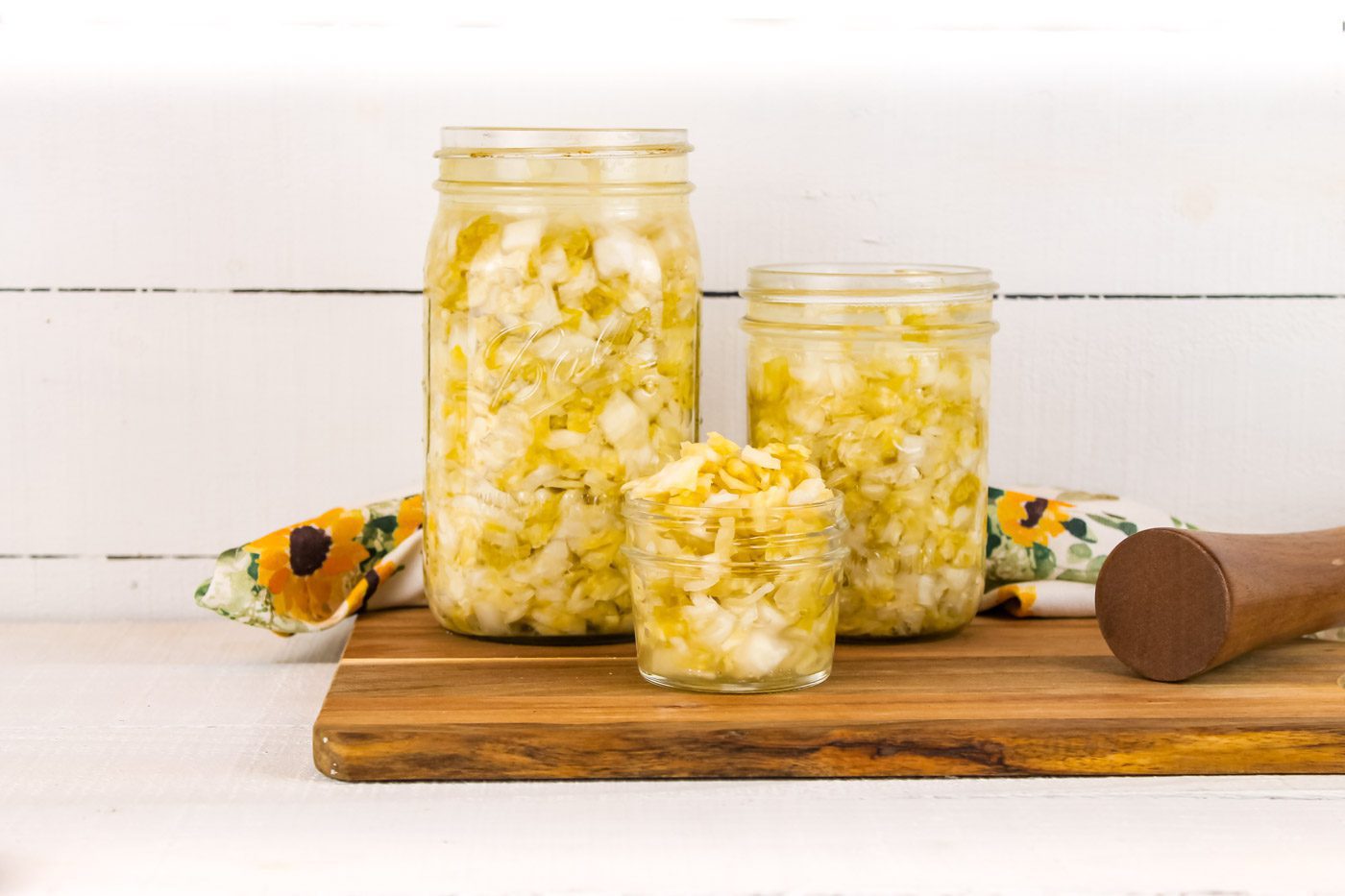
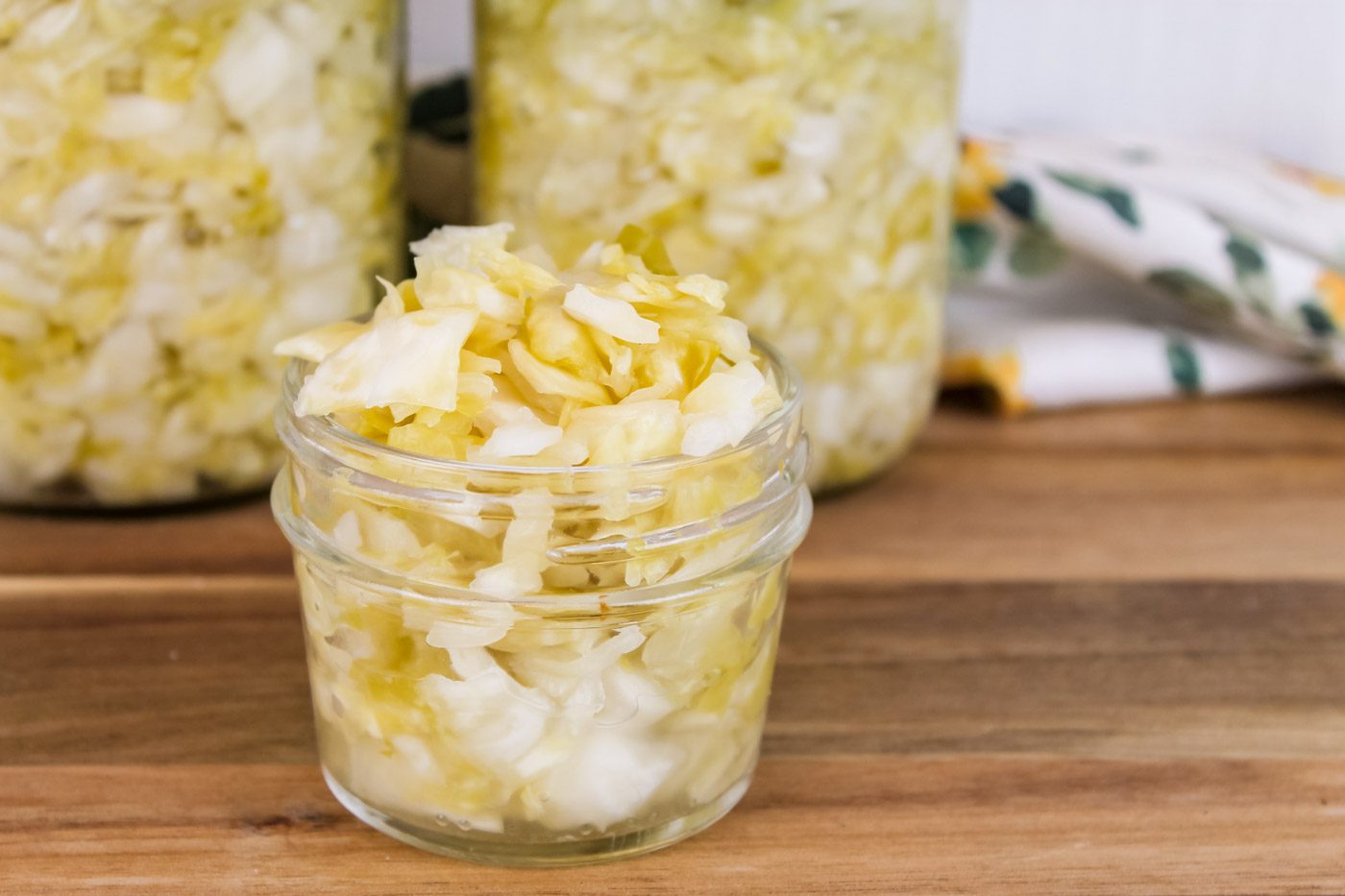
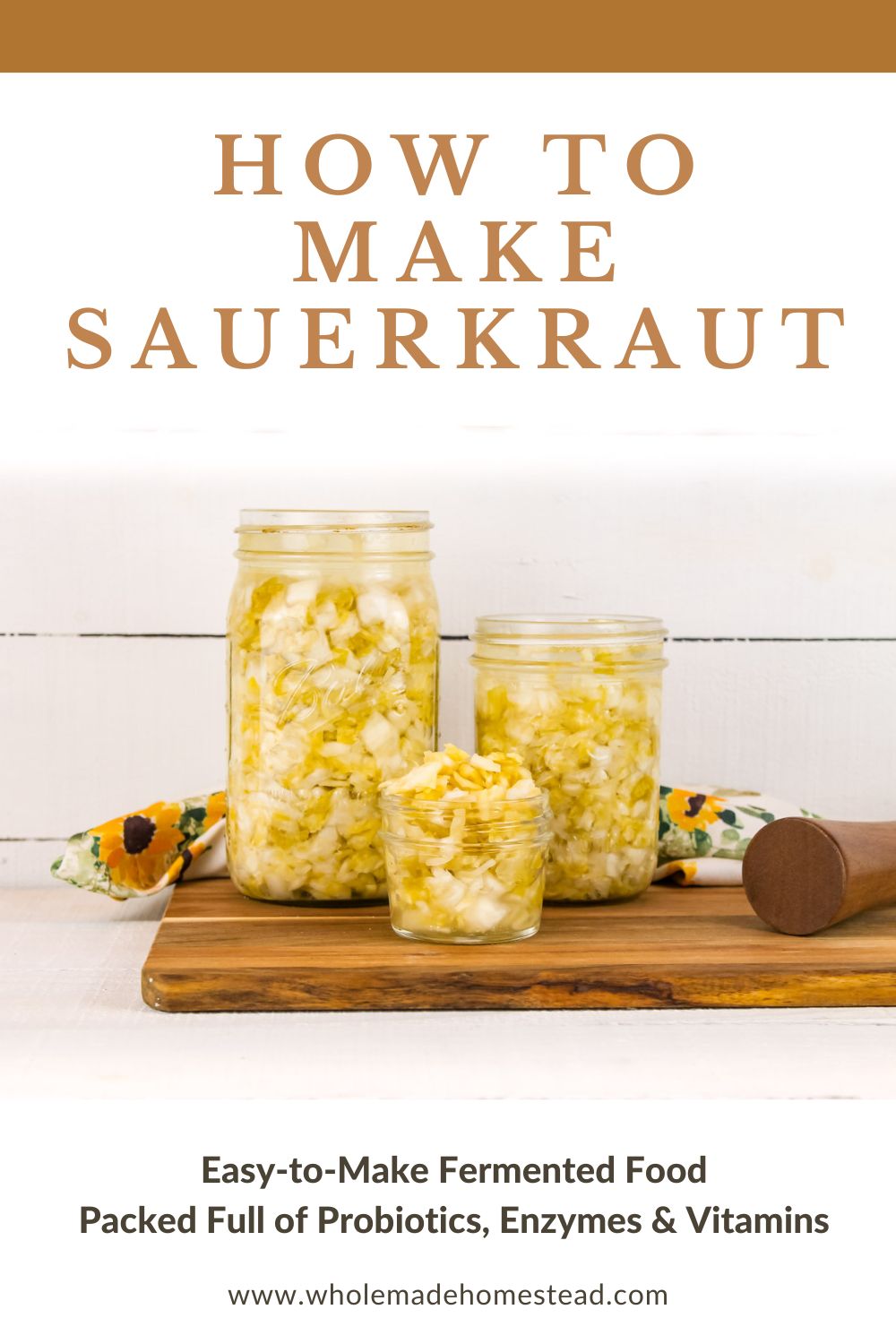
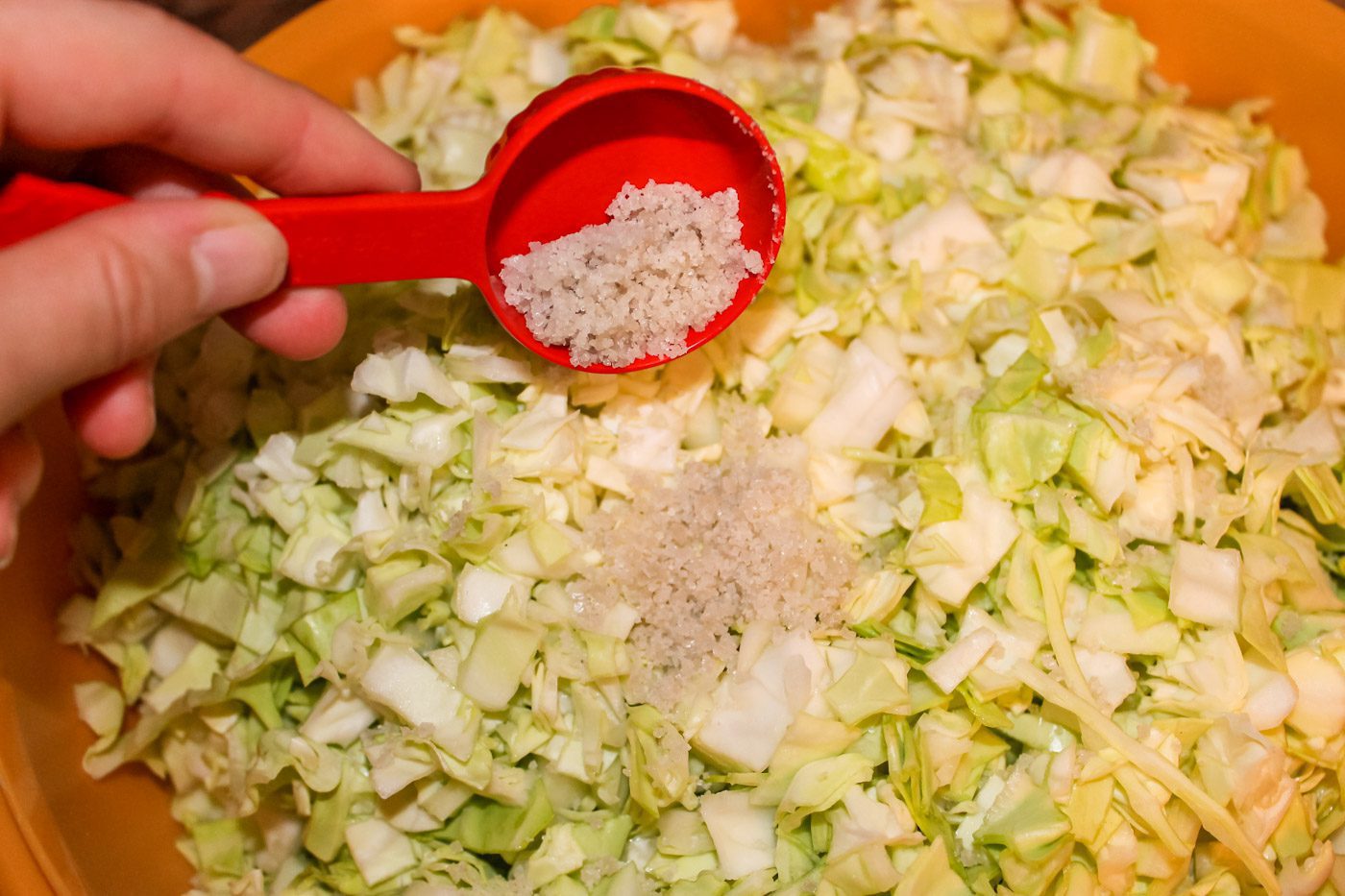
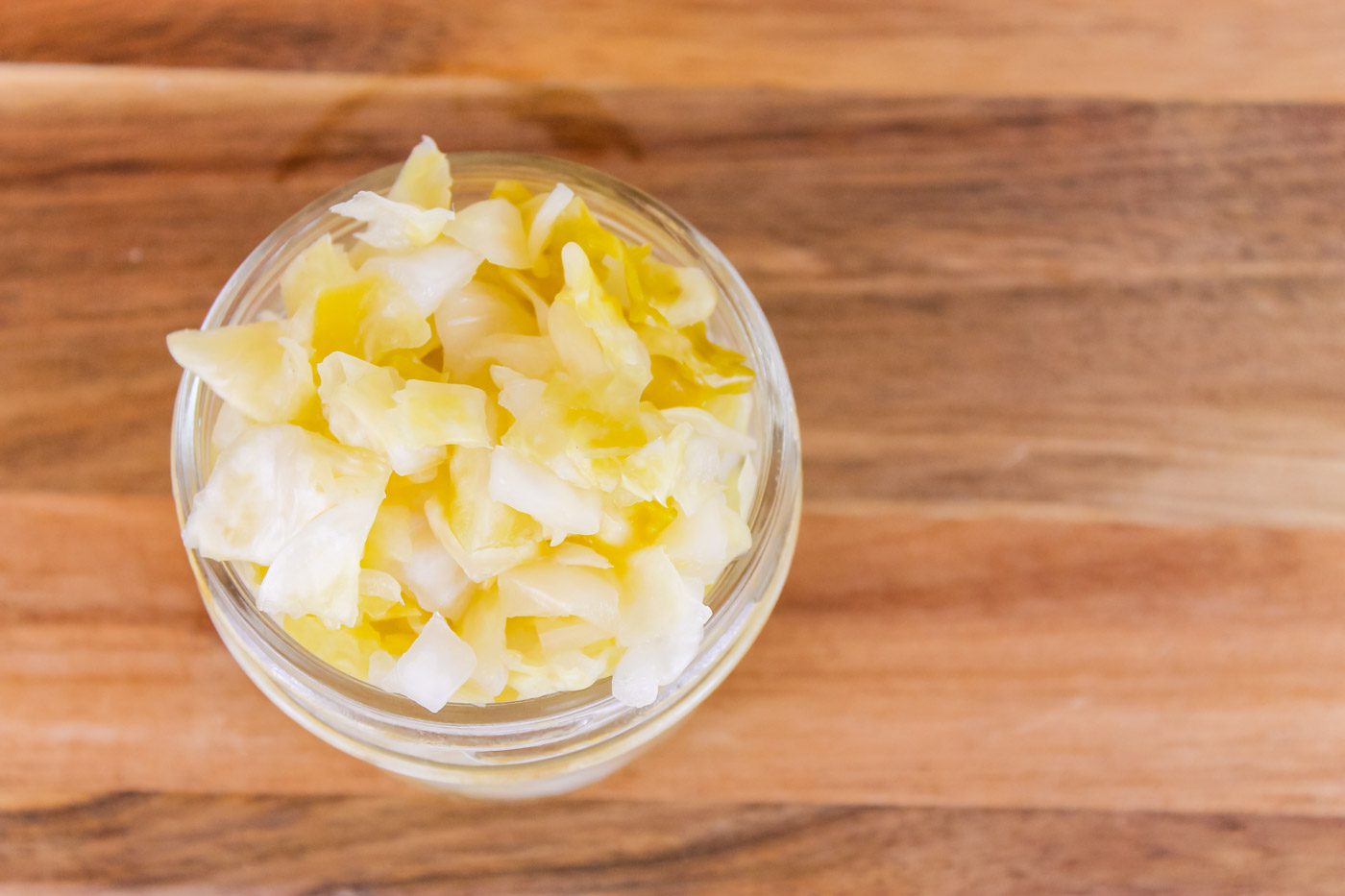
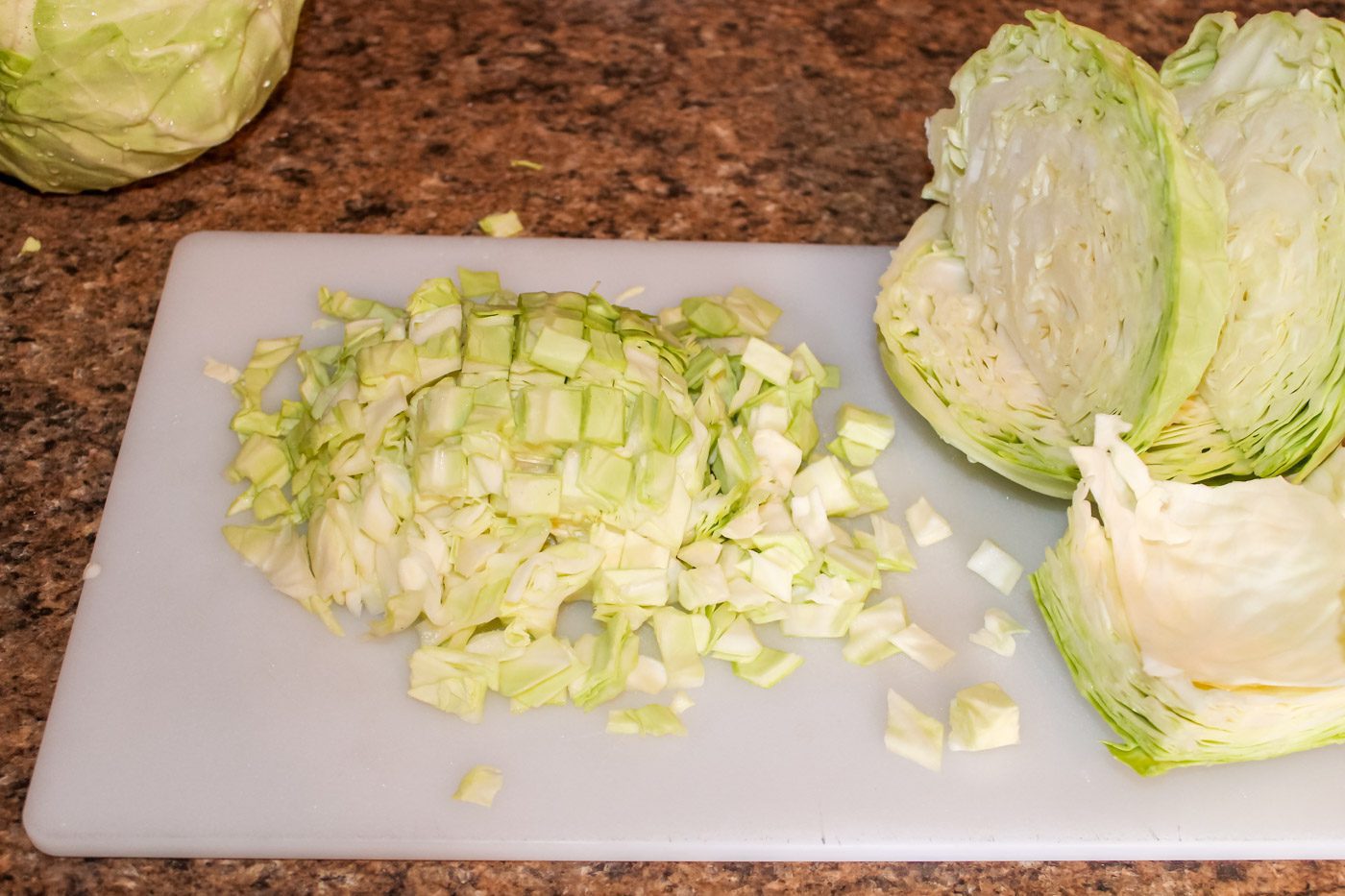
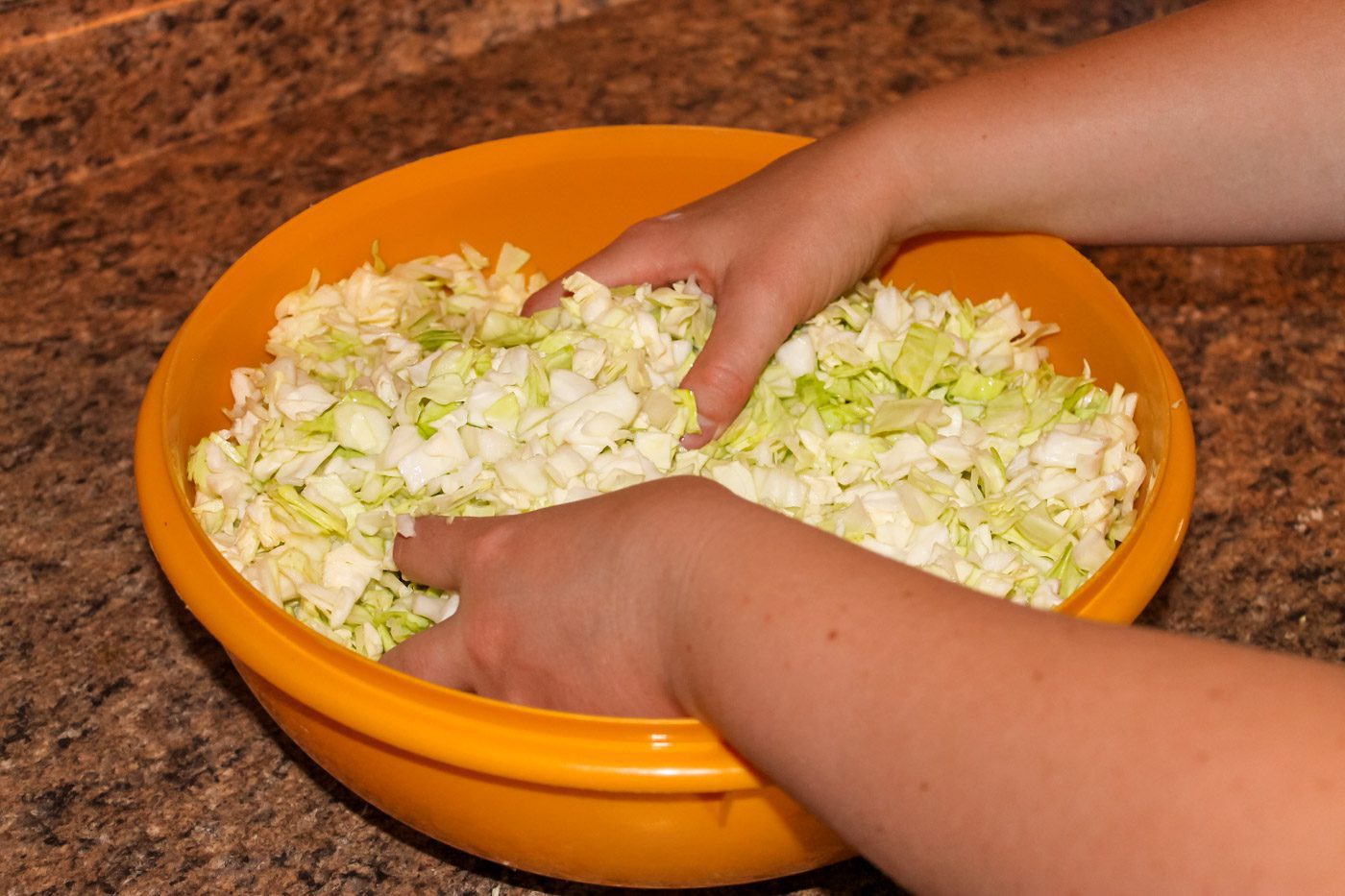
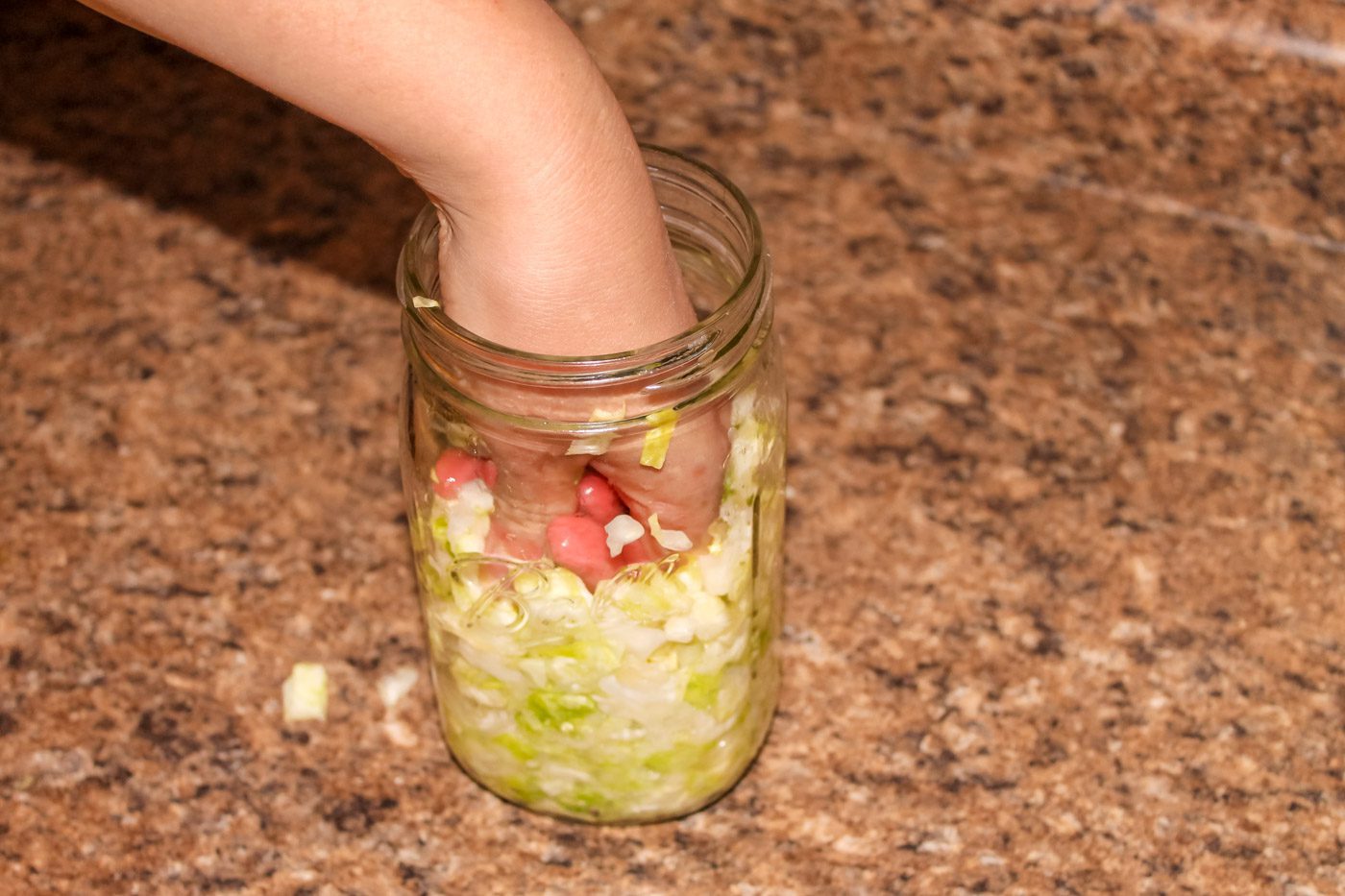
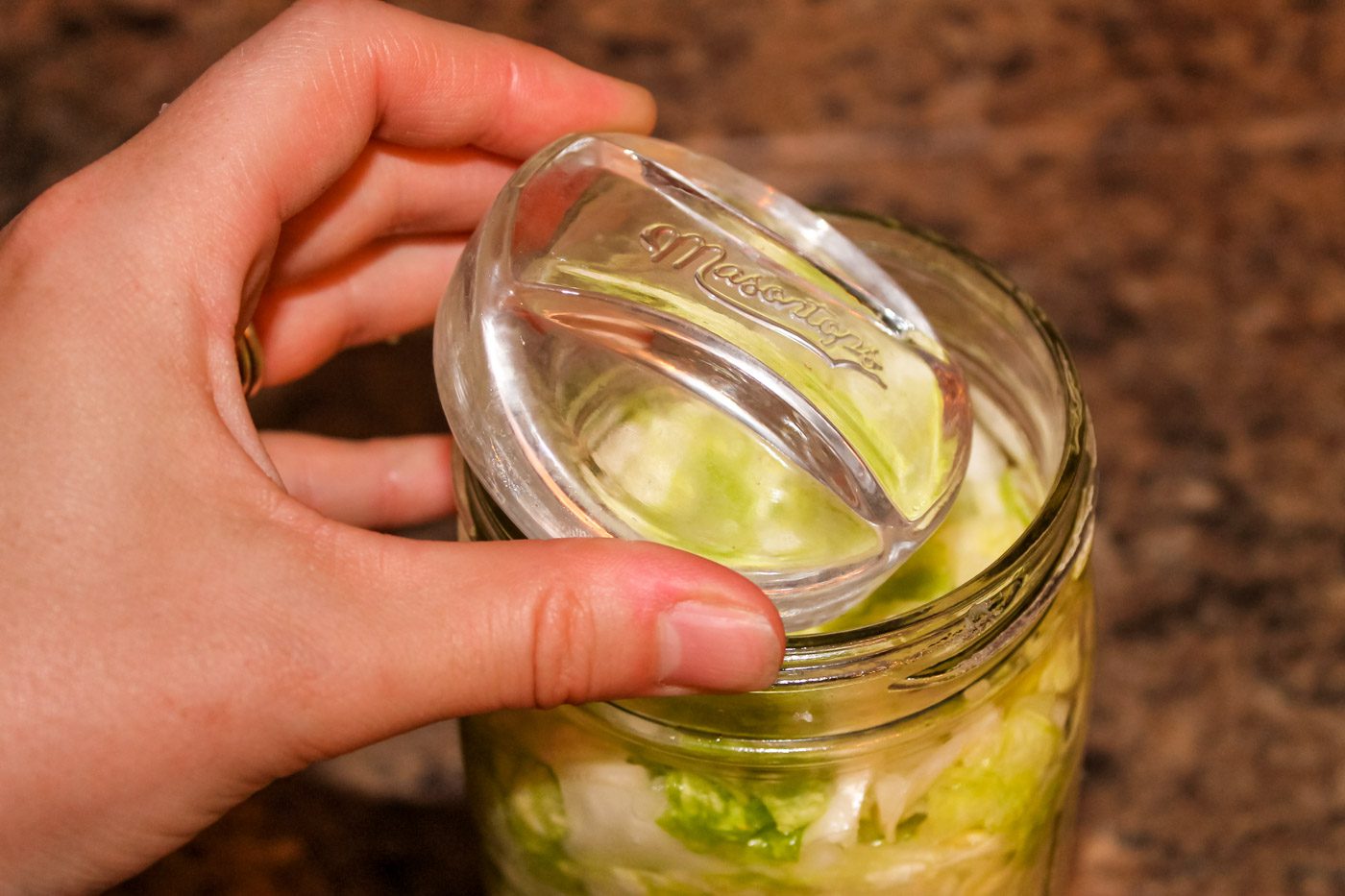
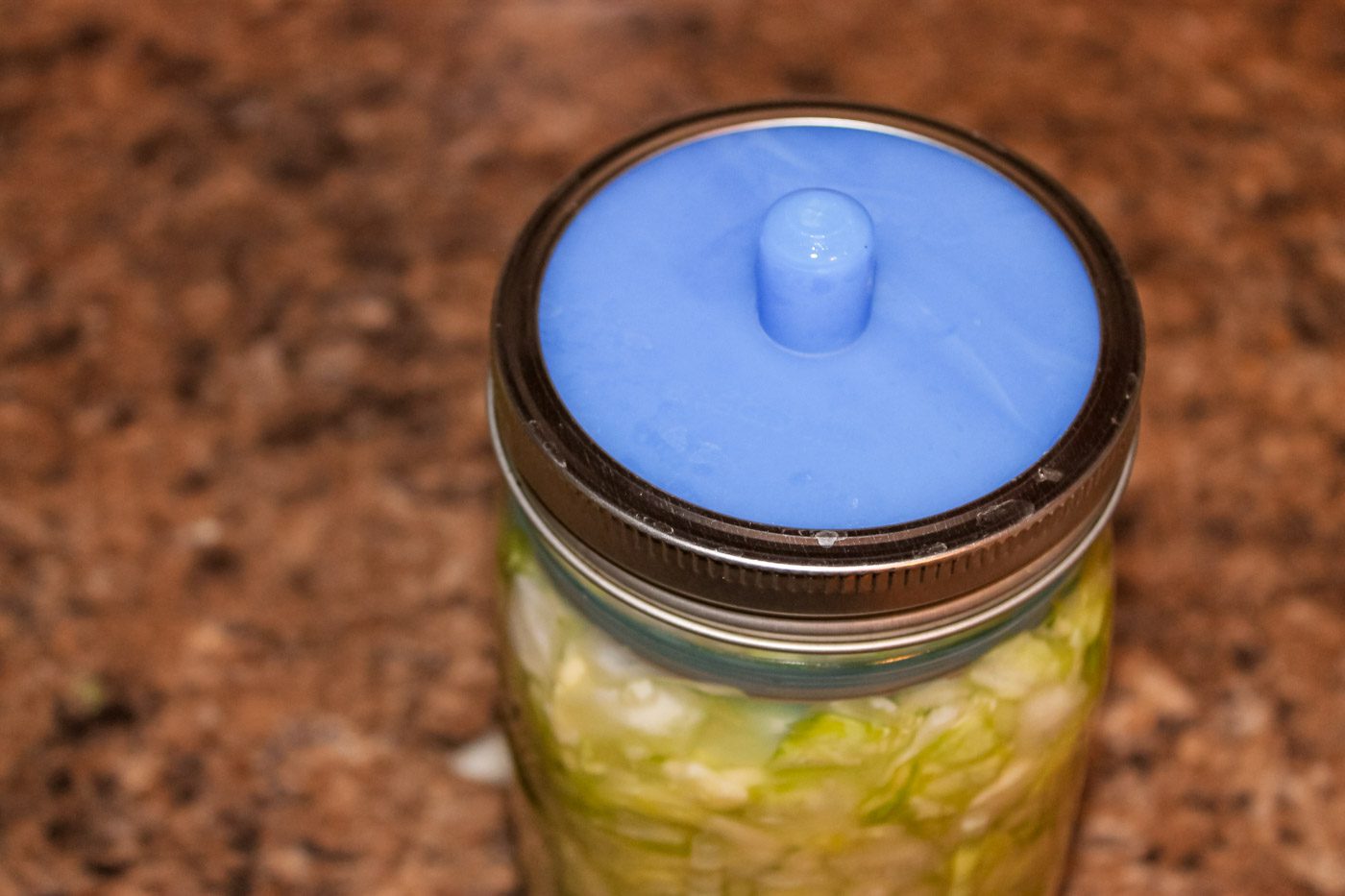
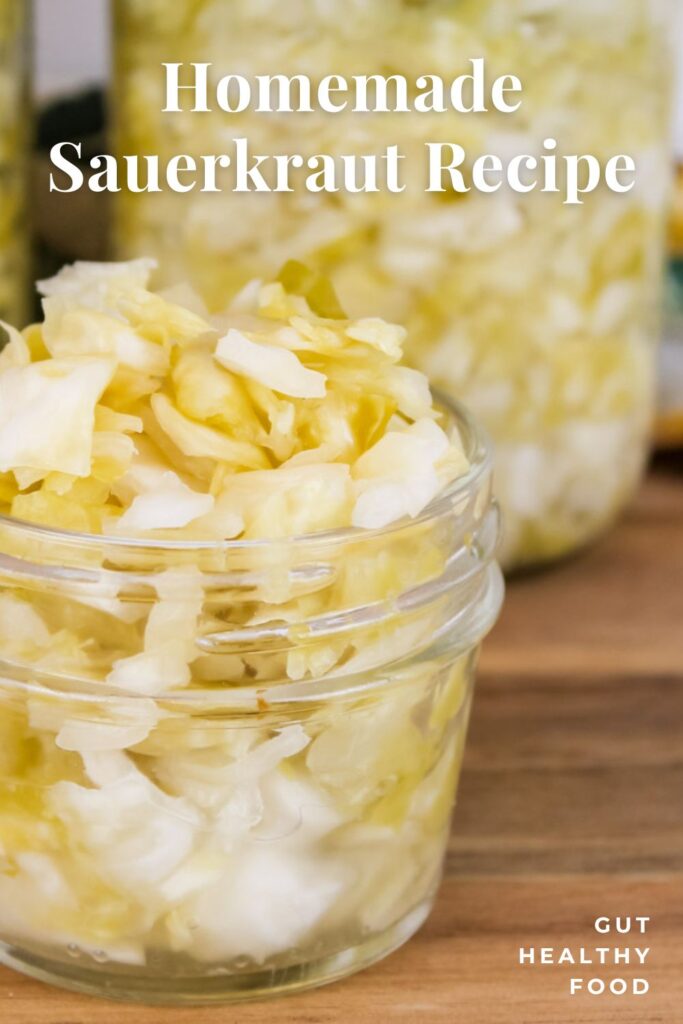

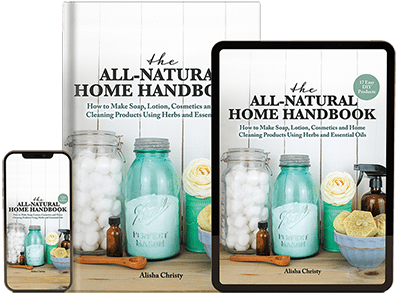




I really appreciate your very detailed notes here. Twelve days ago I started my first batch of sauerkraut from a recipe exactly the same as yours, but without the notes as to when it’s done and what to watch for. Thank you for helping me figure out the kruat was ready!
You are most welcome! I hope your first batch of kraut turns out delicious!